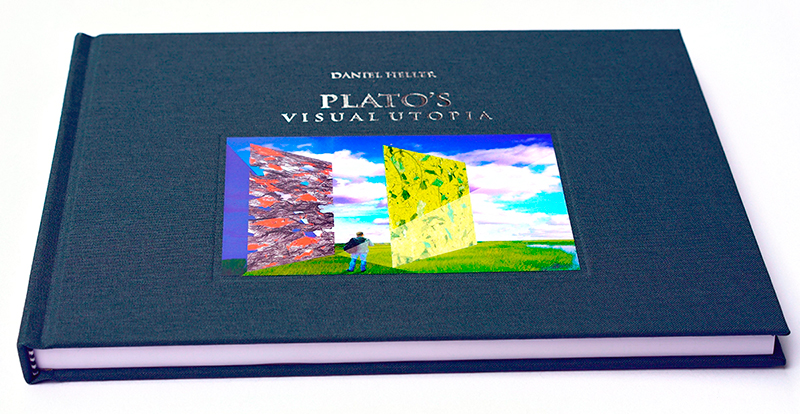PLATO’S VISUAL UTOPIA
I wrote my book Plato’s Visual Utopia after reading and rereading the famed Platonic dialogue of The Republic. Plato’s depth of thought and the difficulty in digesting the philosophical text motivated me to visually express how I understood this book.
In this project, I experimented with combining literature and visual art. I wanted to illustrate Plato’s ideas. I designed the book to spur imagination. And to compare utopias and dystopias. As a result, the book’s illustrations are abstracted allegories inspired by Plato’s masterwork.
Plato asserted in The Republic that “life which is unexamined is not worth living”. Therefore, the basic premise of my book is that to achieve Utopia, individuals and states must continuously self-analyze.
The story
The book is a fiction literature art book. It was inspired by Plato’s dialogue “The Republic”. First of all, the novella explores Plato’s writings through a fictional dialogue. This dialogue is between an explorer searching for Utopia and Plato himself. My book contains forty-eight high-end art illustrations. They bear the respective quotes inspired by the Republic. The story takes place in a dream where the traveler visits Plato’s ideal city Kallipolis. And while he visits he learns a civics lesson from Plato. The educational goal of the project was to facilitate an understanding of “The Republic” through images.
Our protagonist is perpetually searching for a utopia. And his search yields mixed results. While some experiences are positive and fall within the realm of utopia, others are horrible dystopias. In his travels, the explorer reaches the city of Kallipolis and enters into a dialogue with Plato, to learn about the philosopher’s ideal City. After having learned everything he needs to know, he wakes up to his own conclusions.
Finally, my own conclusion, after having read Plato’s Republic and exploring his ideas by illustrating this book, is that in our world, utopias and dystopias, good and bad, coexist side by side in a perfect state of duality.
The story visualized
The book contains forty-eight high-end illustrations in which I have provided a visual narrative to the text. Consequently, it is my opinion that a reader would find it easy to comprehend. Also, please follow the thread on GoodReads
Related Posts
Also, read the related Blog posts as follows: Plato’s Academia, Plato and Justice, Plato’s Duality, Plato’s Imitation Theory, The Republic Lead subjects, Plato’s Regimes, Art as Imitation, Duality in Plato’s Republic, Plato and Art, Dystopia Connotations, Utopia Connotations, What is Utopia, Plato’s Republic, Who was Plato, Plato’s Visual Utopia book
